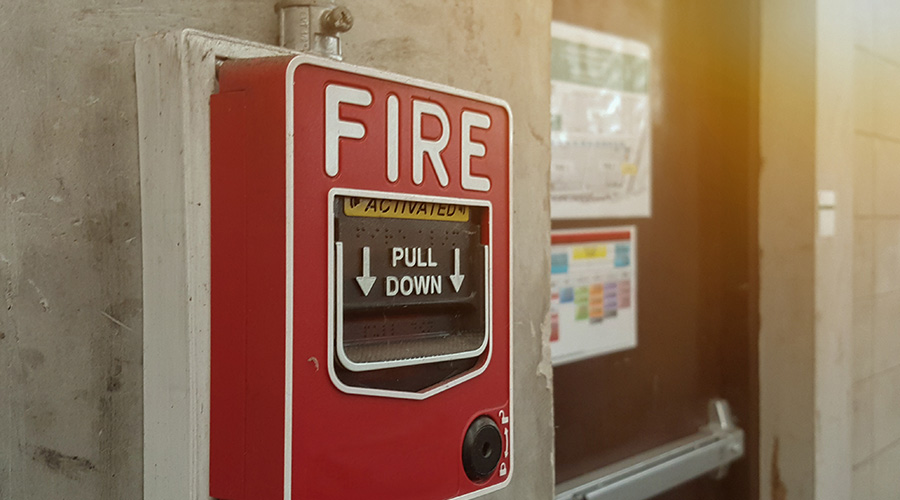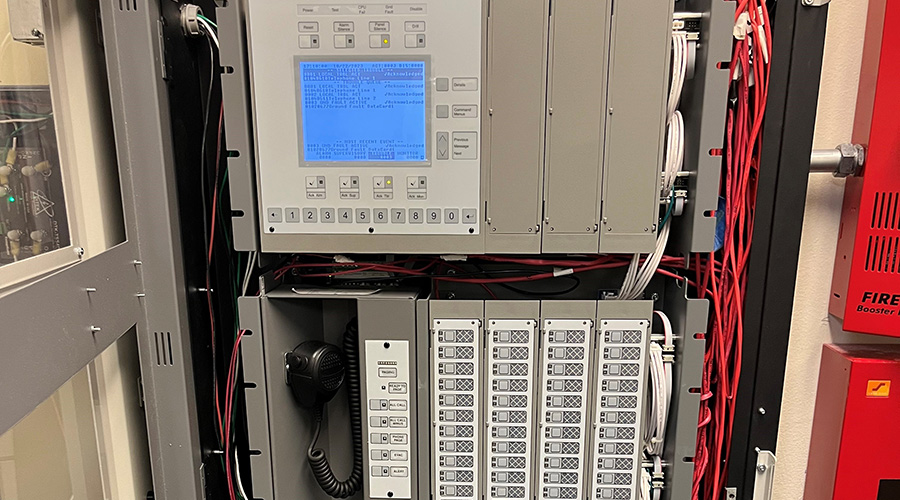 A busy open office may require strobes and alarms designed for larger areas in order for the notification to be noticed.
A busy open office may require strobes and alarms designed for larger areas in order for the notification to be noticed.What To Know About Fire Safety System Inspections
Whether new or old, any fire safety system requires regular inspection, testing, and maintenance — at least once a year, say most experts.
Any building system requires regular inspection, testing, and maintenance to ensure it can do what it’s expected to. Fire safety systems are no different. Most should be tested at least once each year; some components require quarterly testing. “It’s driven by the fire code,” Poole says. NFPA 25, Standard for the Inspection, Testing, and Maintenance of Water-Based Fire Protection Systems, governs water-based fire safety systems, like fire pumps and sprinkler systems.
Relying on individuals who aren’t qualified to perform these inspections and tests — which can be an unfortunate result of shrinking budgets — can backfire. Too often, they won’t know what to look for, Poole says. For instance, they may overlook exit doors on which the hinges are rusted shut.
One test that’s often skipped is an internal inspection of the sprinkler piping to check for corrosion. “It’s a big job, not easy to do, and disruptive,” says Rob Hicks, vice president, fire protection and life safety with WSP + CCRD, a consulting engineering firm.
Yet it’s also critical. Sprinklers are static systems most of the time. That is, water doesn’t regularly run through them; if it did, most problems would come to light more quickly, Hicks notes. Internal inspections are the alternative.
Protecting sprinkler pipes from corrosion has long been a hot button issue, Lee says. In the past, most corrosion protection involved MIC, or microbiologically induced corrosion. In the past few years, however, it’s become clear that much of the problem with corrosion in sprinkler systems is old-fashioned oxygen corrosion, he says. That’s especially the case with dry pipe and pre-action systems used in places where water-filled pipes might be subject to freezing, or in areas with sensitive equipment, like data centers.
Instead of filling the dry pipe and pre-action systems with air — which, of course, contains oxygen — nitrogen generators fill the pipes with about 98 percent nitrogen. “You’ve taken the oxygen out of the pipe and therefore the oxygen corrosion out of the equation,” Lee says. Nitrogen doesn’t harm the pipes or the atmosphere, he adds.
On larger systems, this can be fairly cost-effective prevention system. Lee notes that he’s seen some organizations have enough faulty pipe that they’ve had to replace entire sprinkler systems that were less than five years old. “This will more than pay for itself over the cost of having to replace the pipe on a larger system,” he adds.
With smaller pre-action systems, traditional approaches with chemical dehydrators may still be more cost-effective, Lee says. That’s based on the small amount of pipe that would have to be replaced if there was a leak.
The suppression system also should be regularly tested, Poole says. As cities grow and use more water, water pressure to any specific facility can drop. A sprinkler system installed ten years ago that requires 70 pounds per square inch (PSI) may now be receiving just 60 PSI. “Make sure the company testing and inspecting the sprinkler system also monitors water supply availability,” Poole says.
Another frequent challenge is “a lack of documented inspection, testing, and maintenance (ITM) for existing fire and life safety systems in buildings that are being re-purposed,” Smith says. For instance, it’s not uncommon to encounter a fire pump or fire water backflow preventer that has not had documented testing in years. To be confident a fire safety system can work properly, “it is important to understand what ITM is required, how frequently, and what healthy results should look like,” he adds.
As building and building systems change, building owners and facility managers should assess, bringing in experts when necessary, the impact to on fire safety. “Loss of property and/or human life is the bottom line,” Smith says. “This is what is always at stake.”
Karen Kroll, a contributing editor for Building Operating Management, is a freelance writer who has written extensively about real estate and facility issues.
Email comments to edward.sullivan@tradepress.com.
Related Topics:














